The Nasser D. Khalili Collection of textiles, manuscripts, coins, photographs and other items and art related to the hajj and the holy cities of Medina and Mecca constitute the ‘largest of its type outside the Topkapi Palace Museum in Istanbul‘. The collection, covering the year 700 until 2000, includes items for their incredible beauty and craftsmanship, but also too, objects for their curious and unusual nature.
From China to Russia, and from India to the Caucaus, the collection spans artistic depictions of Mecca and Medina and objects associated with the hajj from around the world. This collection of artistic traditions from around the world and throughout a 1300-year period presents numerous unfamiliar and refreshing viewpoints on the hajj. While physically situated in Saudi Arabia, the hajj is an experience that has been shared by people from all over the world and the Khalili Collection lets us explore this from a new perspective.
Of the total collection of around 5000 objects, much of this been photographed, documented and presented on the internet in a commendable effort to share these incredible objects with the world. Here, we present some notable examples in the collection to explore beautiful and curious objects, but also to explore how the hajj and the cities of Medina and Mecca have been commemorated in cultures and countries that are not our own.
Indian depiction of Masjid al-Haram and the Prophet’s Mosque at Medina from the late 18th century
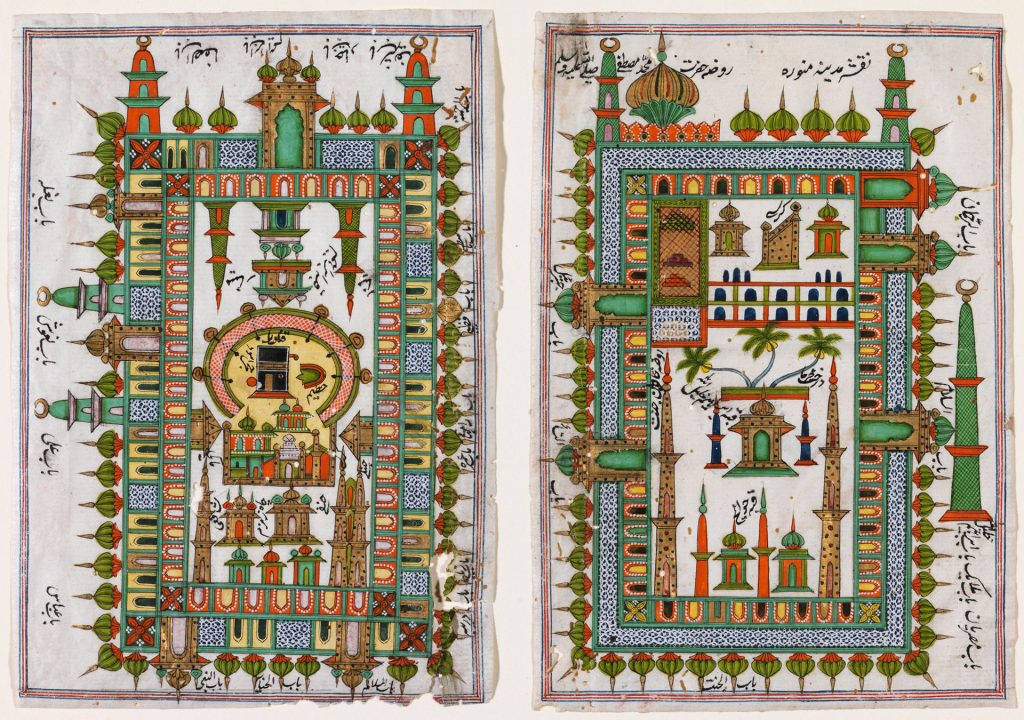
Chinese depiction of the Ka’ba drawn in watercolours and ink from the nineteenth century
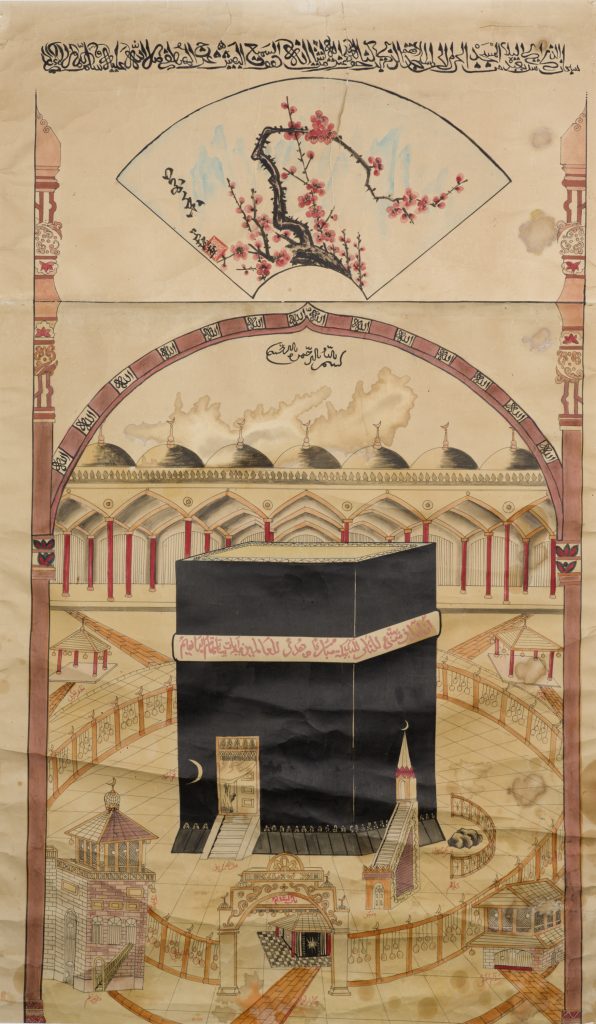
Iranian depiction of the Alexander the Great praying at the Ka’ba with his crown removed from the 16th century
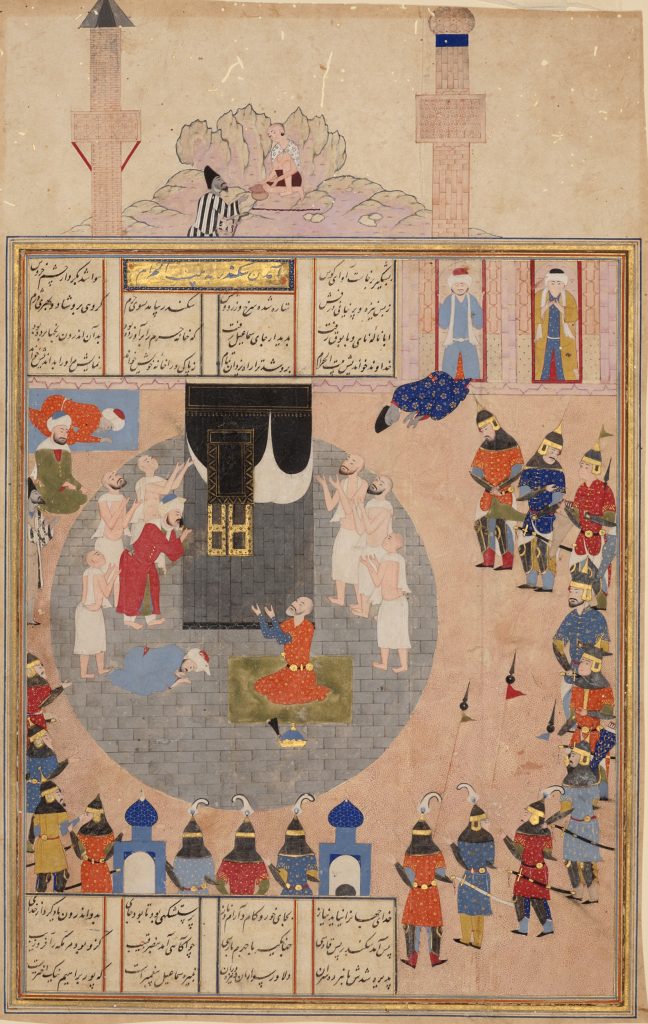
Russian depiction of Mount Arafat with verses from the Quran from 1886

Turkish-made Mahmal from the 17th century destined for Mecca, which would have set off with the convoy from Damascus
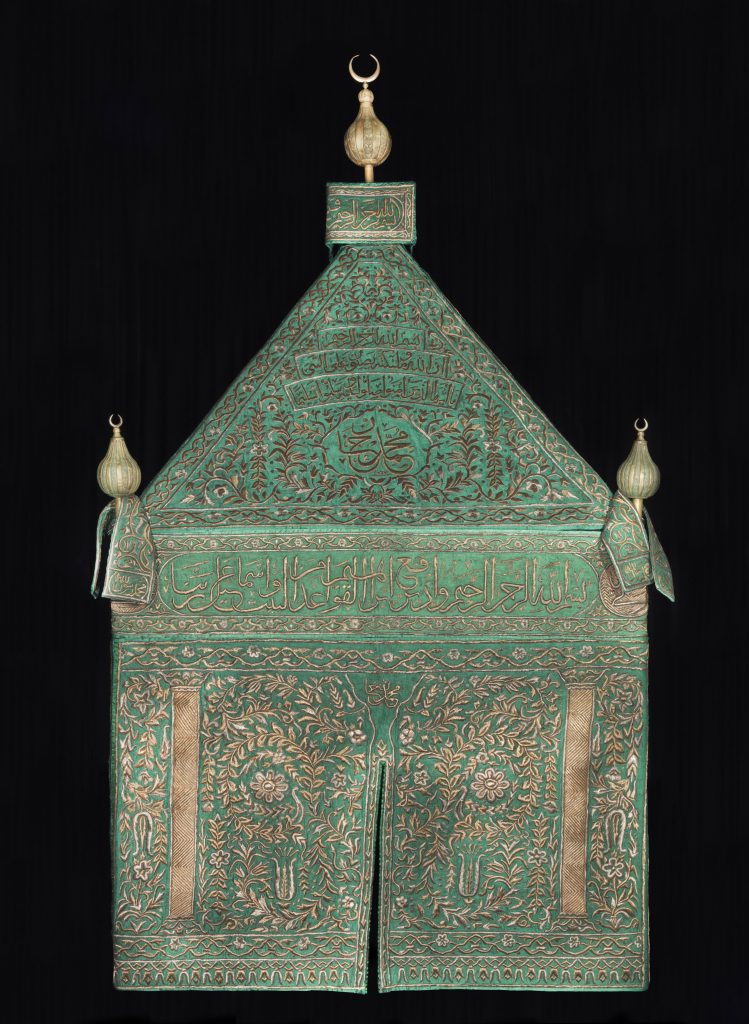
Panorama from 1845 believed to be the first accurate depiction of Mecca by an Indian cartographer from Dehli named Muhammad Abdallah
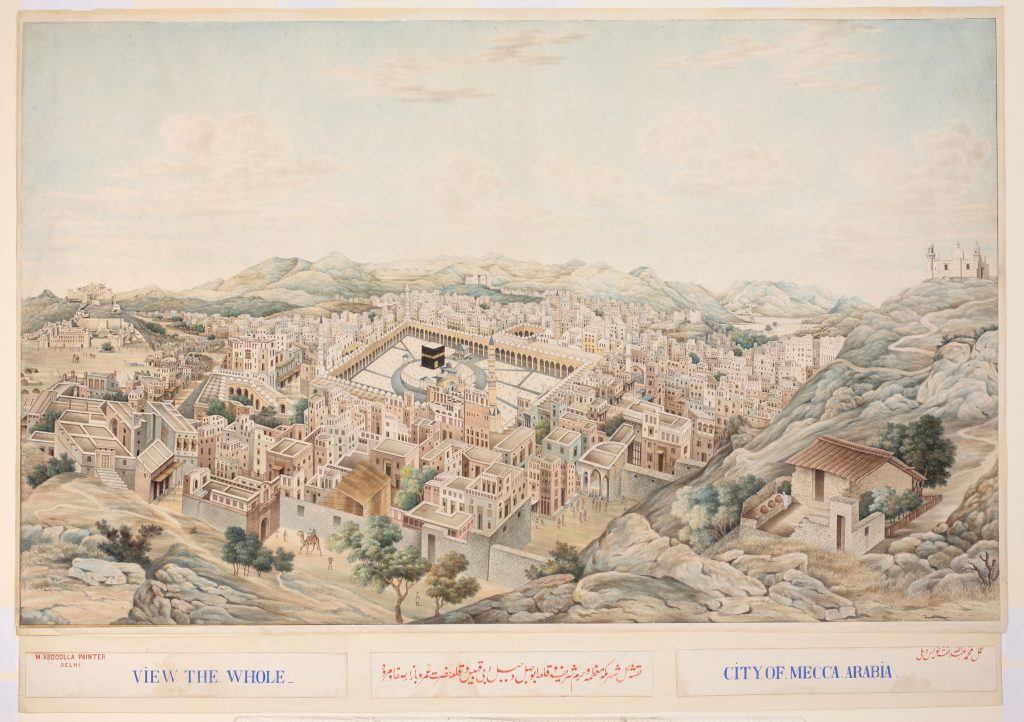
Depiction of the Masjid al-Haram in Mecca understood to be painted by Indian artists working in Mecca in the 17th or 18th century
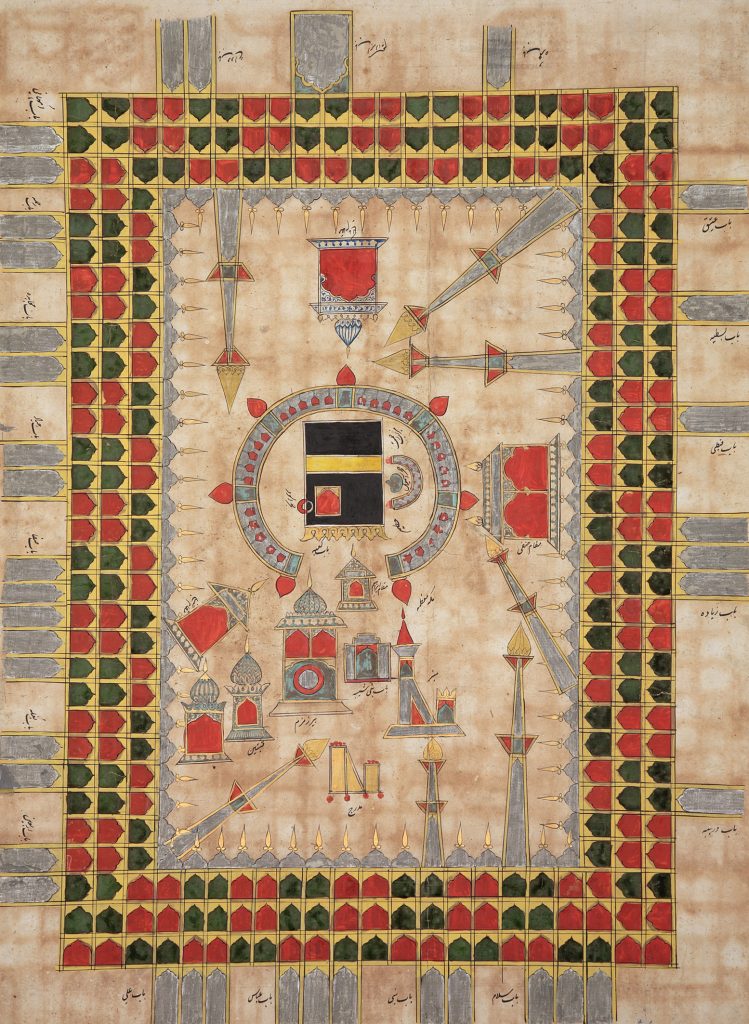
Turkish qiblah compass to determine the direction of prayer with a depiction of the Ka’ba and Holy Sanctuary in Mecca from the late 18th century
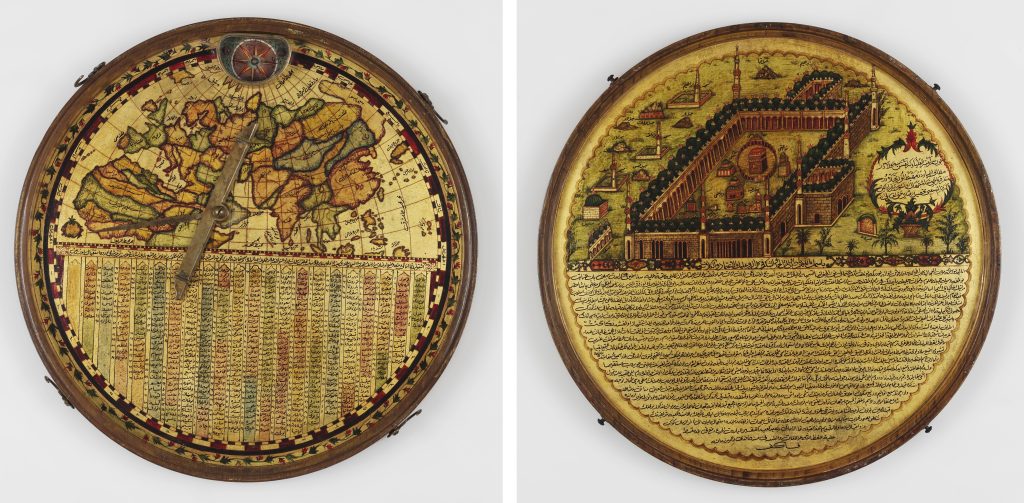
Indian depiction of a Sufi saint named Mian Mir praying at the Prophet’s Mosque in Medina from the 18th Century
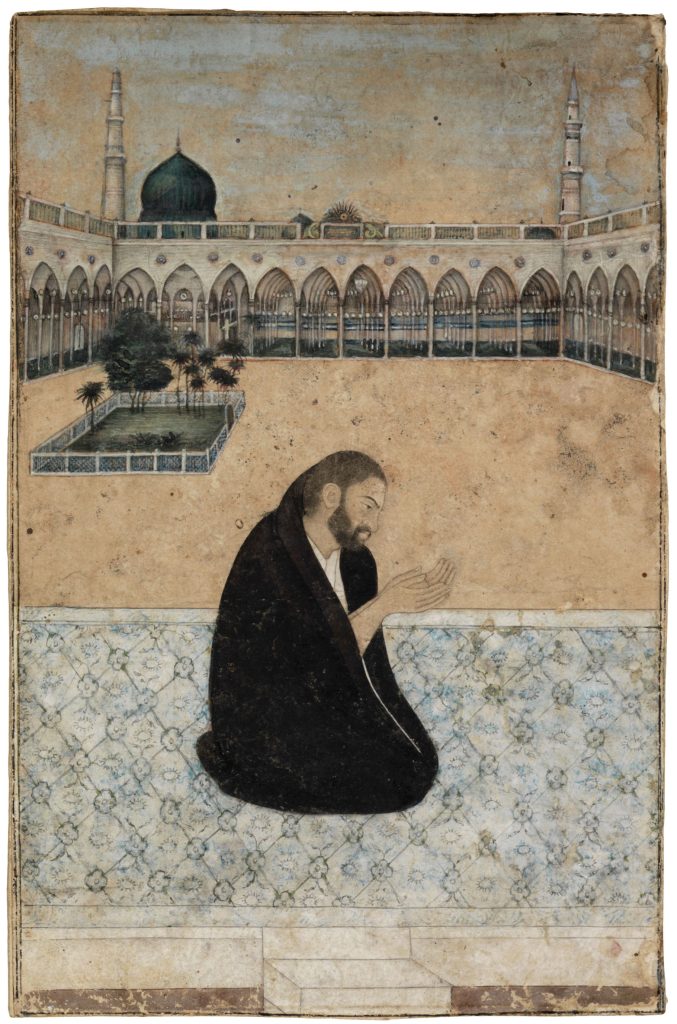
Egyptian certificate marking a visit to the Prophet’s Mosque in Medina from the 1930s
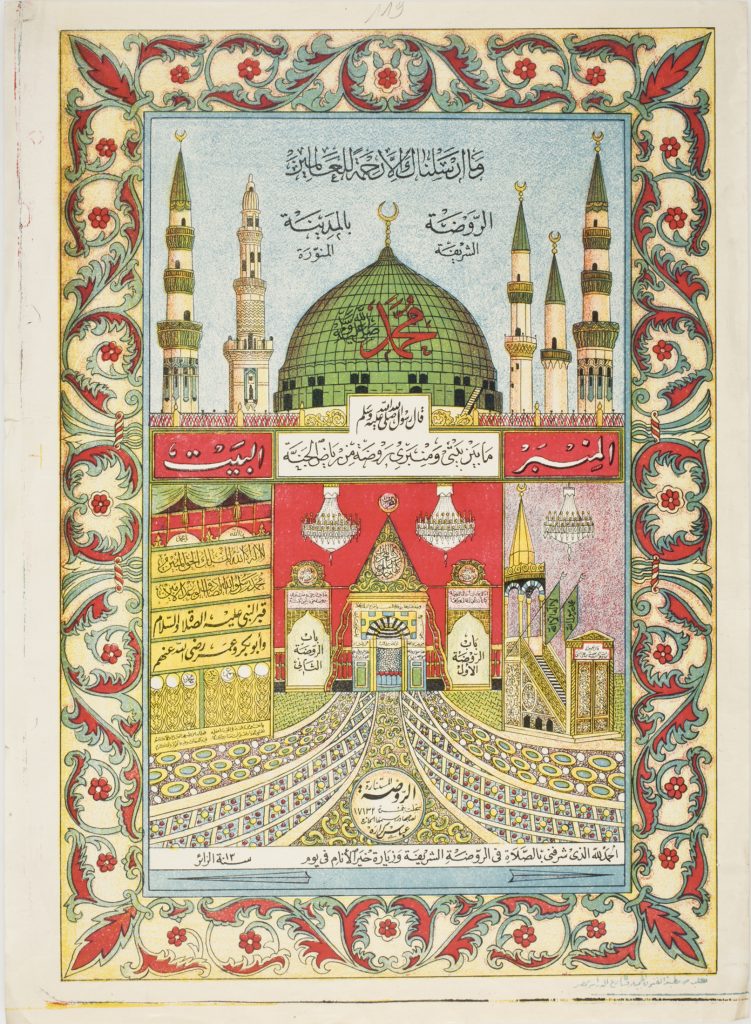
European pop-up of the Ka’ba and the surround Holy Sanctuary from the 20th century
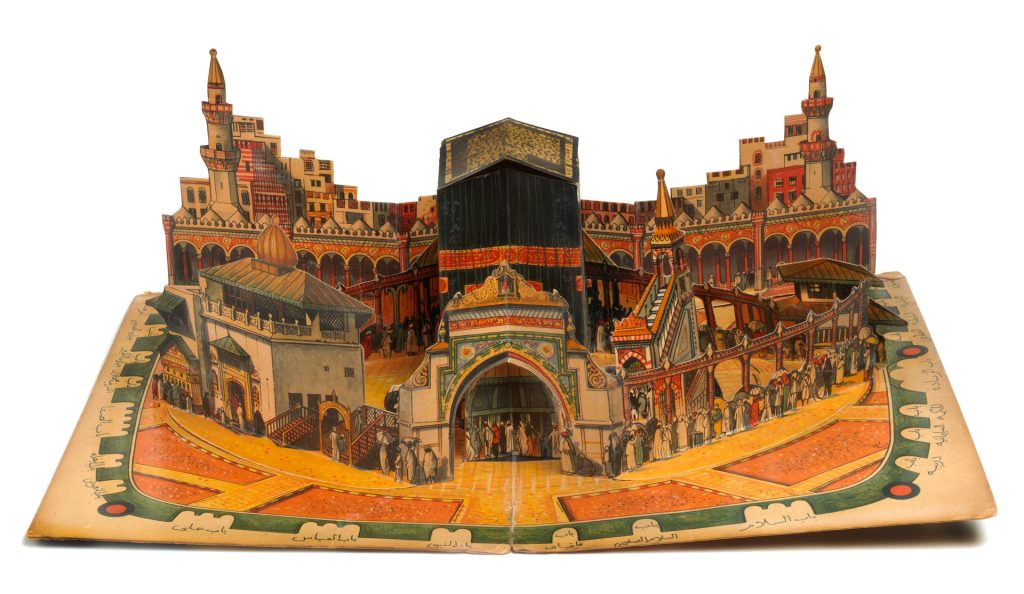
Syrian tray depicting the procession of the mahmal from the late 19th century
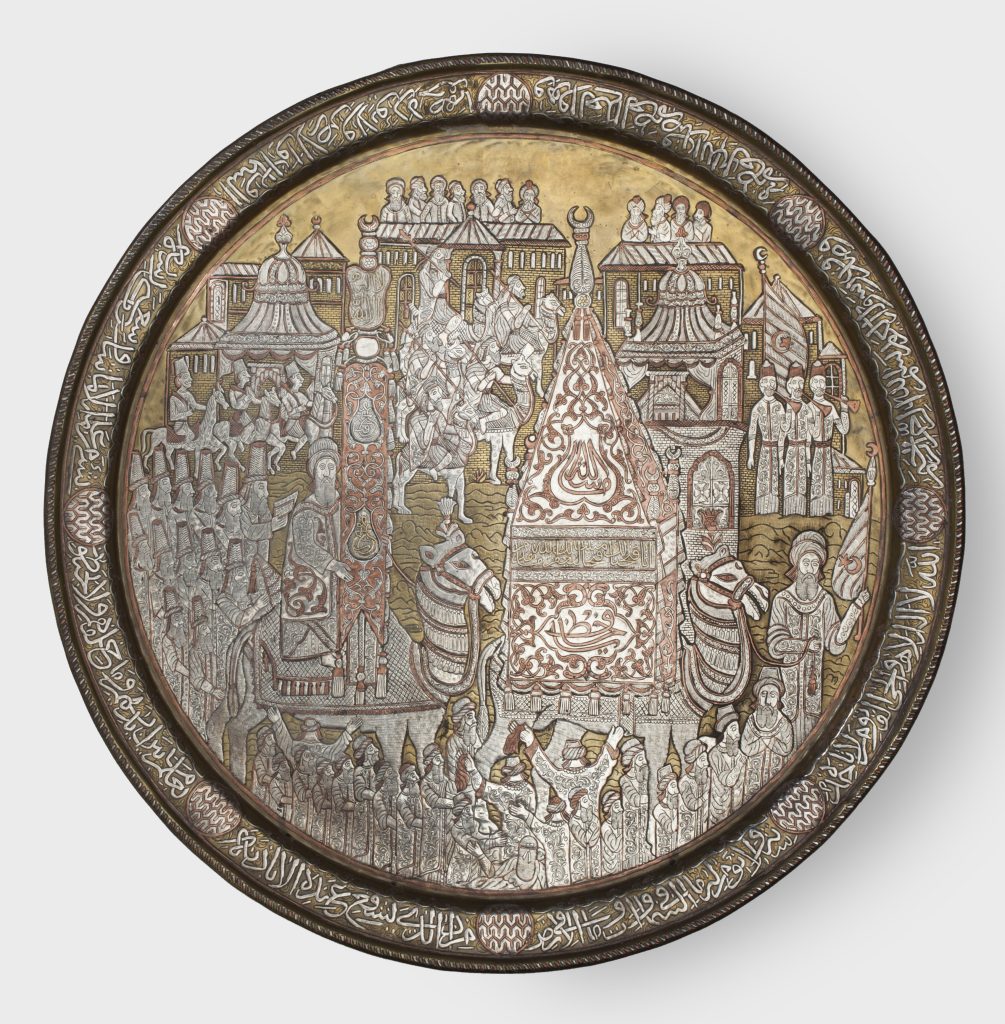
Turkish tile depicting Mecca’s Holy Sanctuary
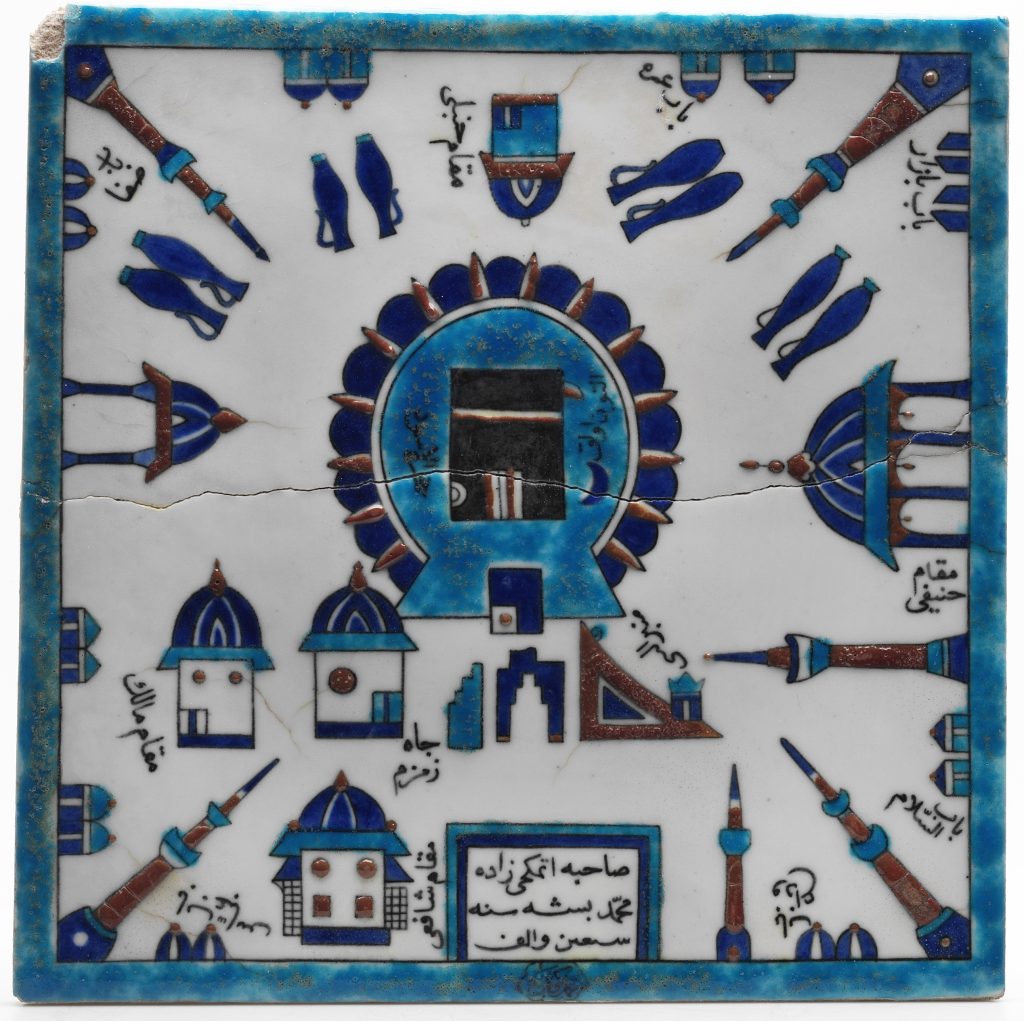
Egyptian-made mahmal that would have led the convoy from Cairo to Mecca between 1867 and 1876
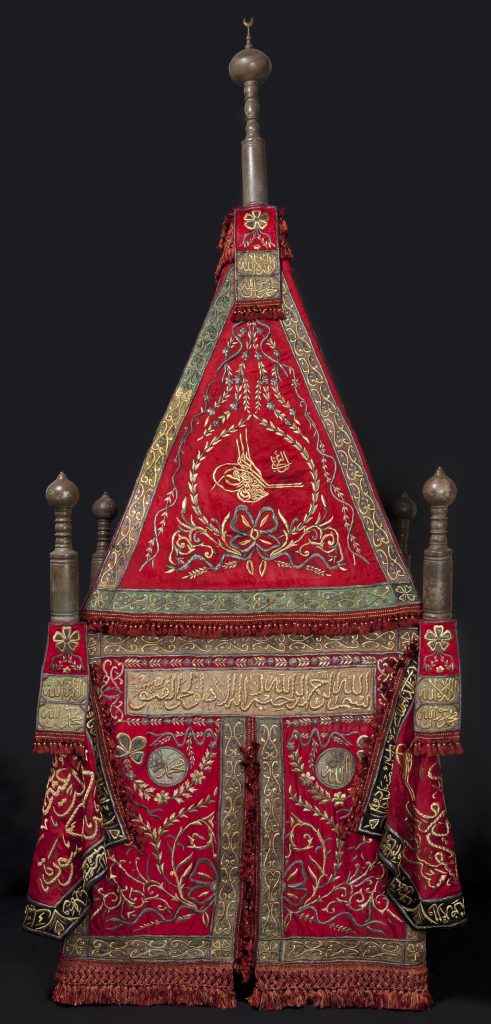
Turkish-made tray depicting the Masjid al-Haram from the nineteenth century
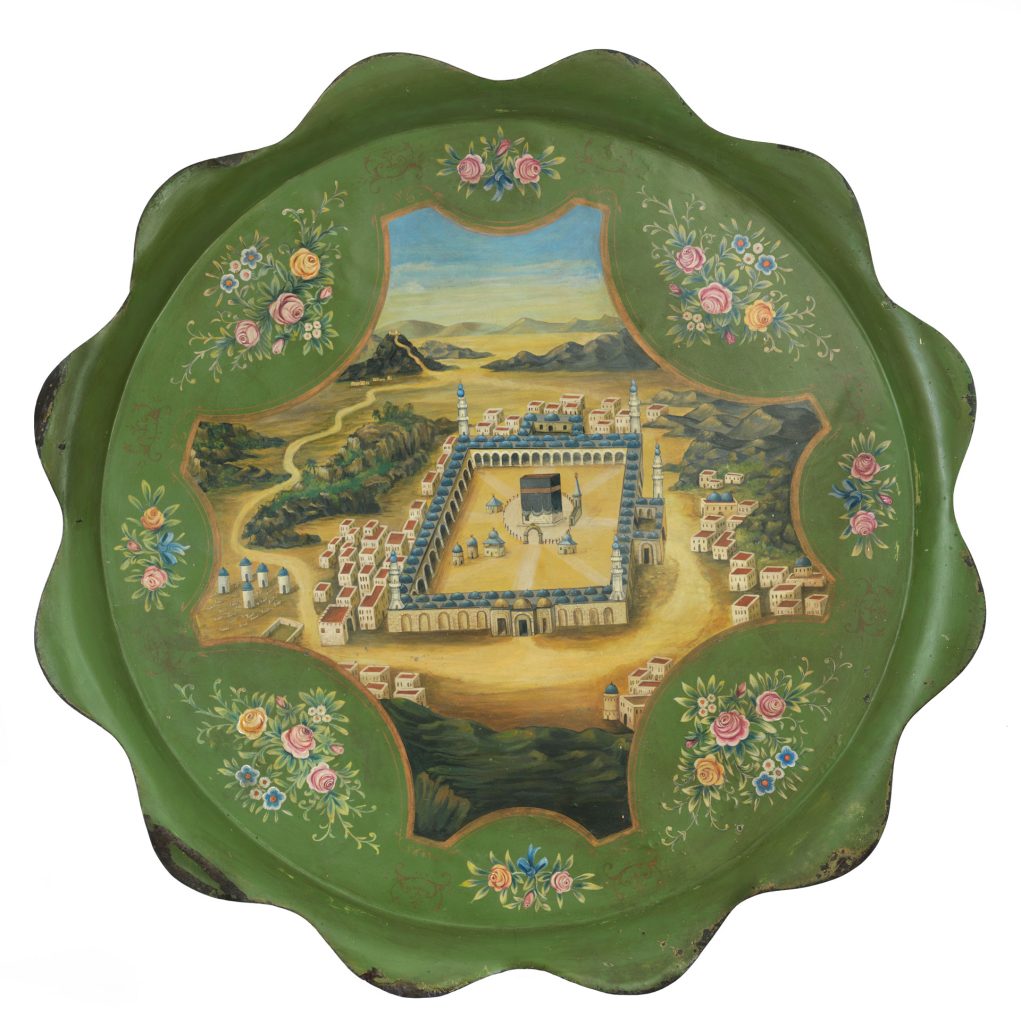
Depictions of the major locations of religious importance in Mecca painted by Indian painters in the 17th or 18th century
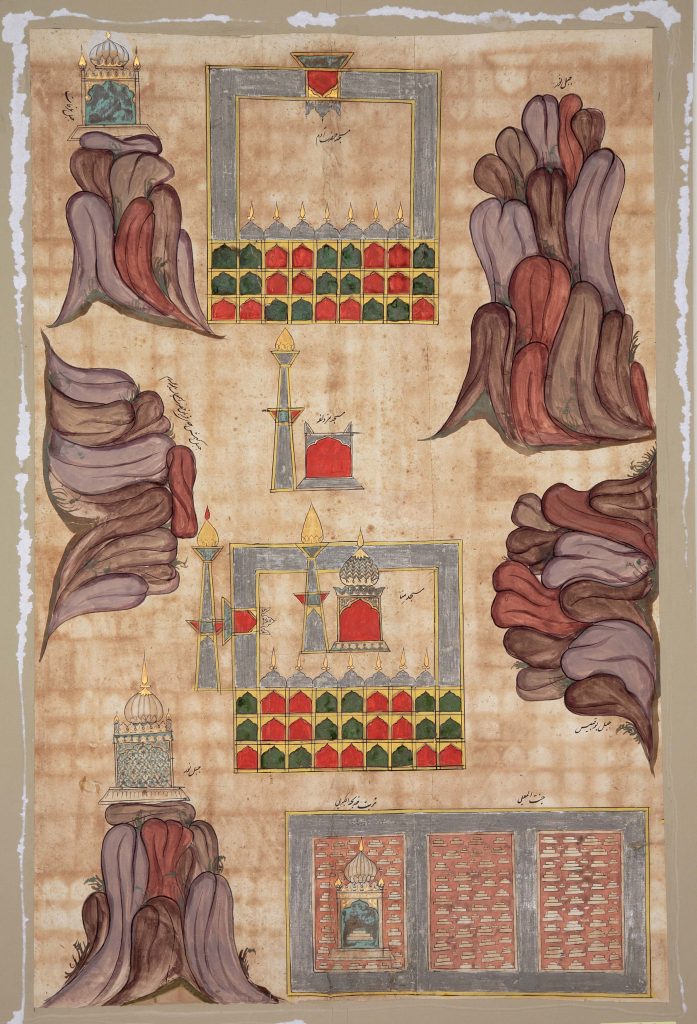
Turkish-made pear-shaped objects incasing dust swept from the floor of the ka’ba to be used as a relic to give blessings from the 19th century
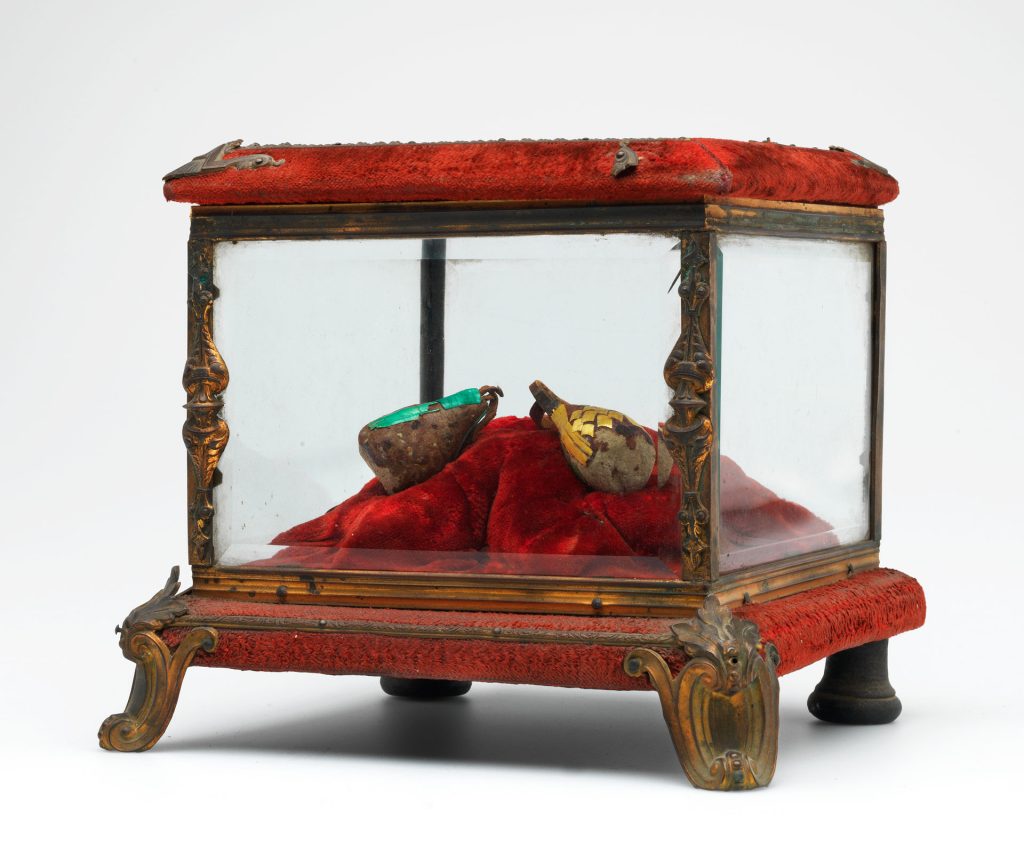
Chinese depiction of the Ka’ba surrounded by Arabic calligraphy from the 19th century
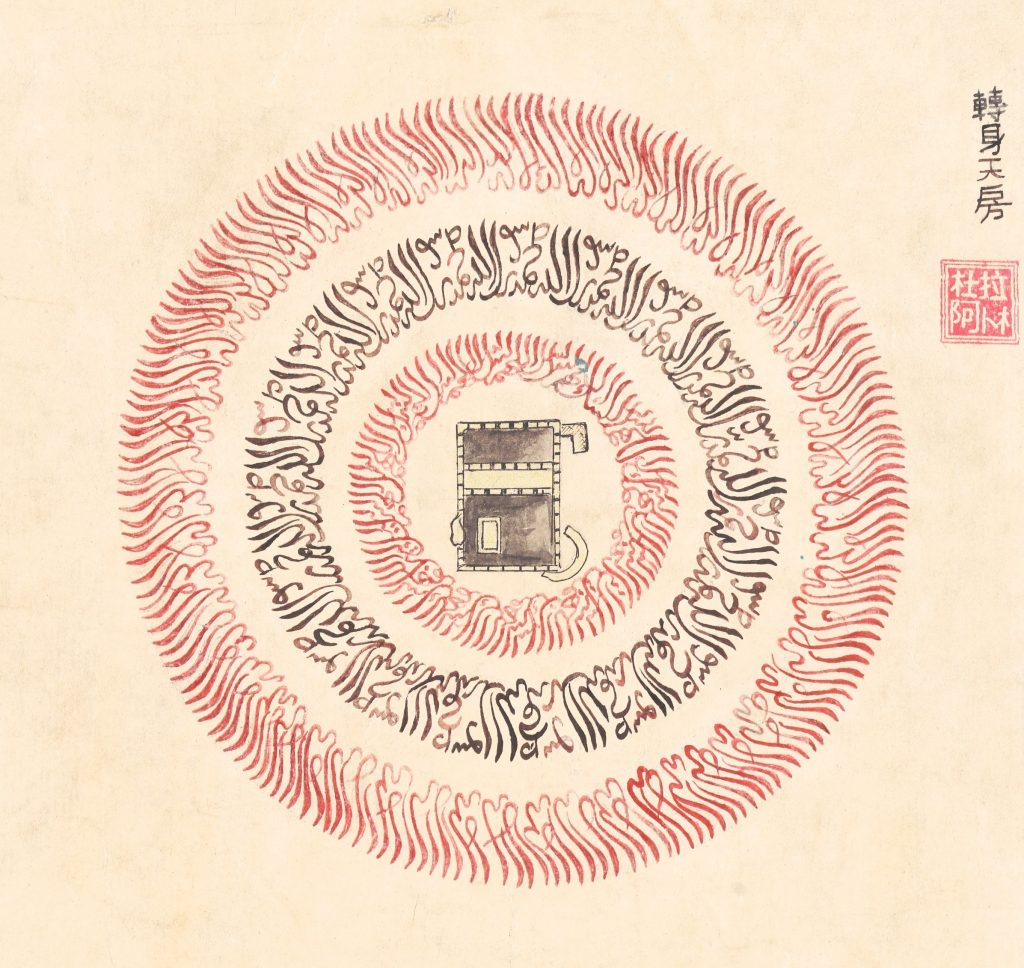
Depiction of the city of Mecca in the early nineteenth century believed to be painted by Daghestani artists
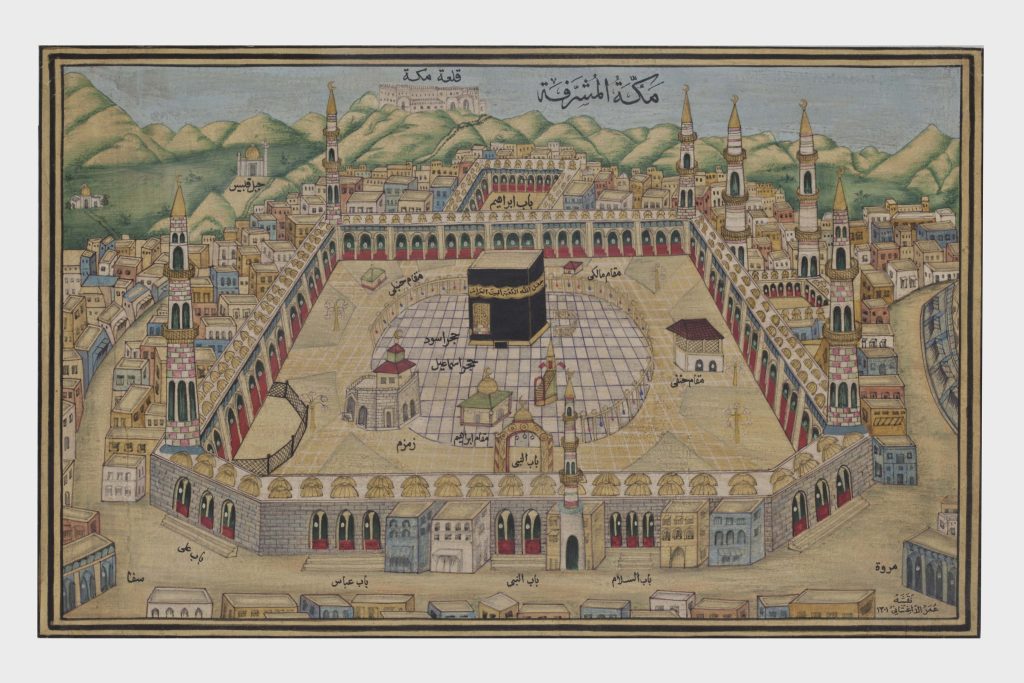
Chinese depiction of the Ka’ba from 1845

Illustration of the Holy Sanctuary in Mecca from a Persian guide to the pilgrimage
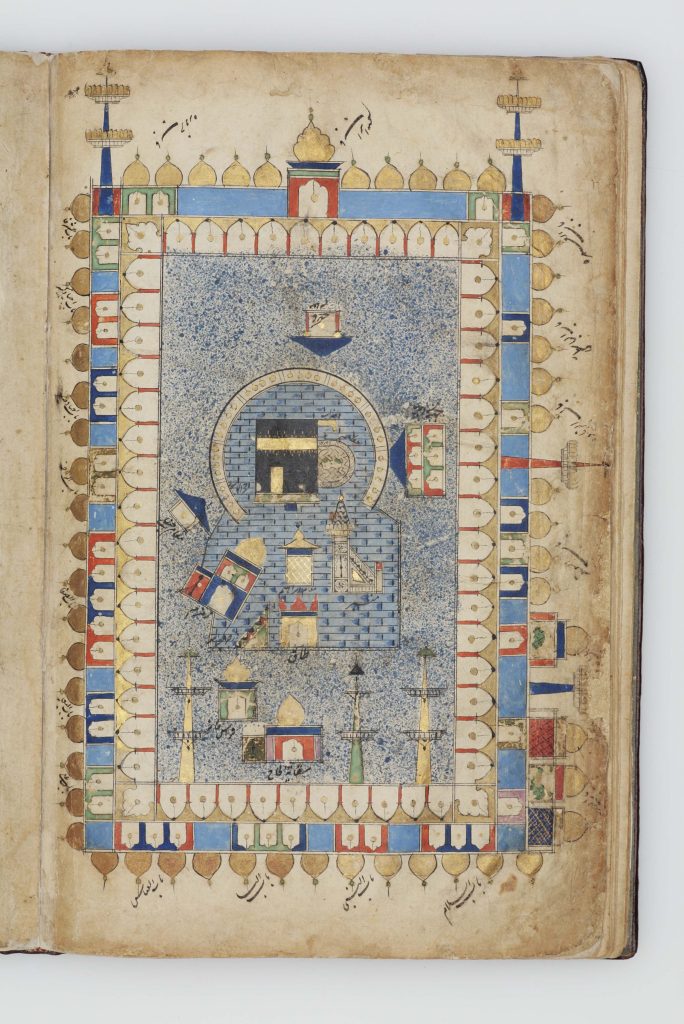
Indian-made talismanic shirt depicting Medina and Mecca from the late 16th century
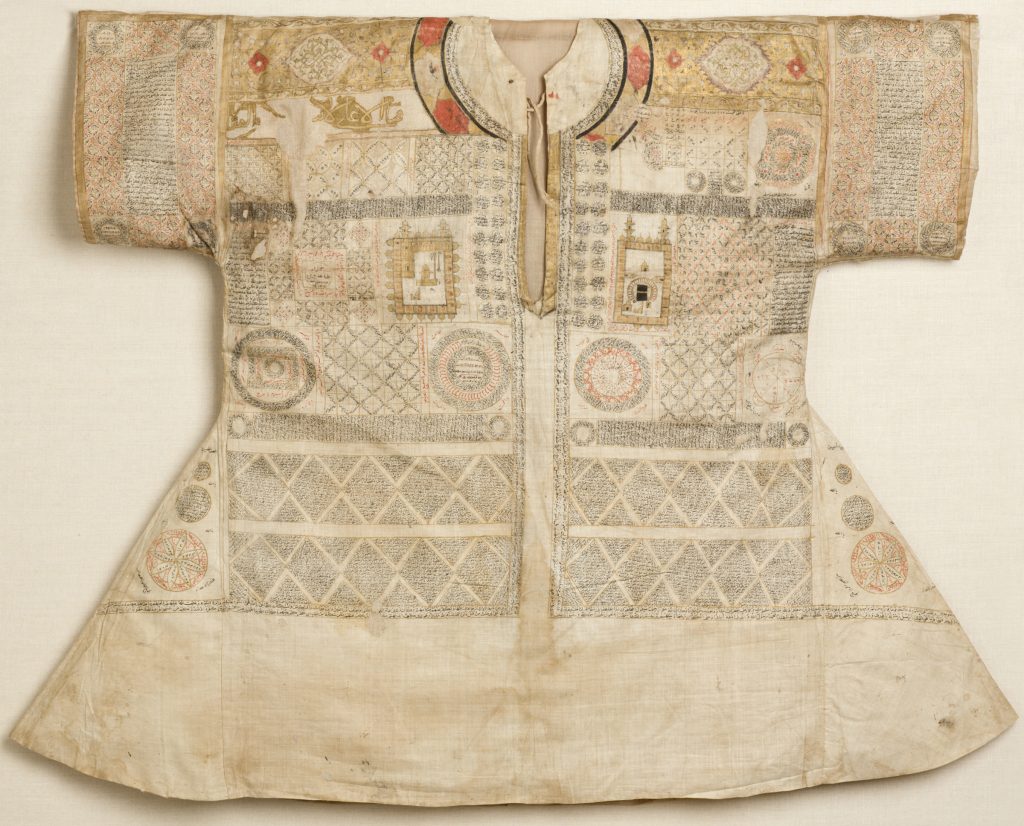
Turkish depiction of the city of Mecca from the 18th century
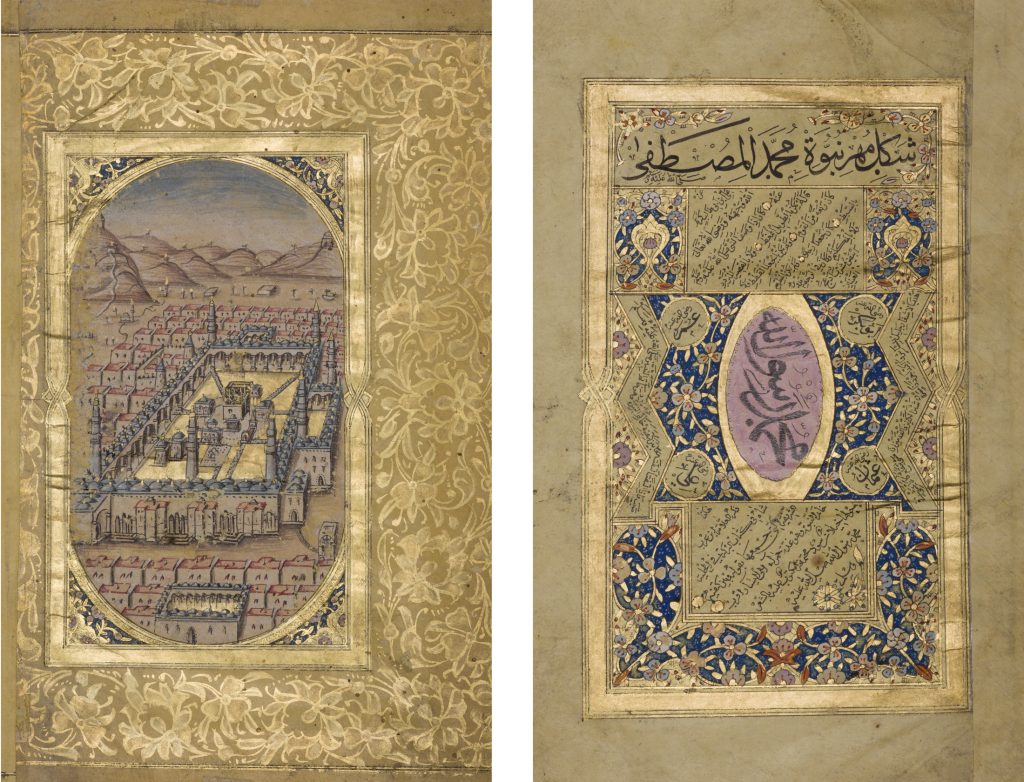
Iranian depiction of Medina and Mecca from the 18th century
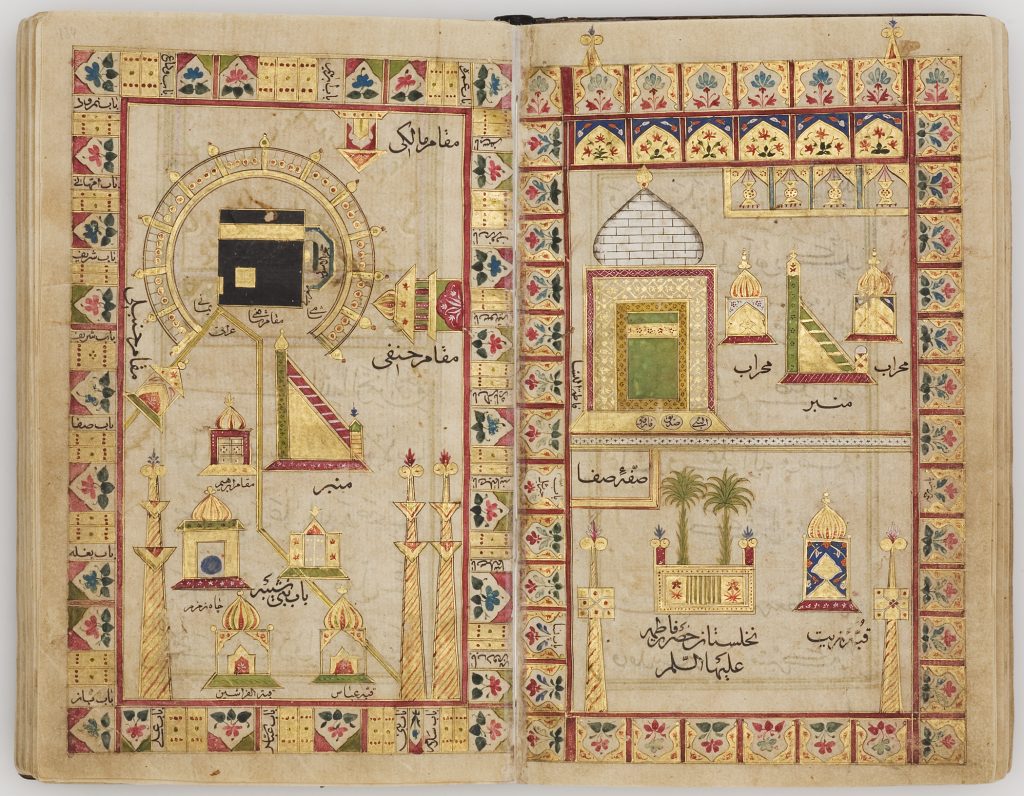
Indian-made depiction of the Prophet’s tomb along with other important locations in the two holy cities from the early 19th century
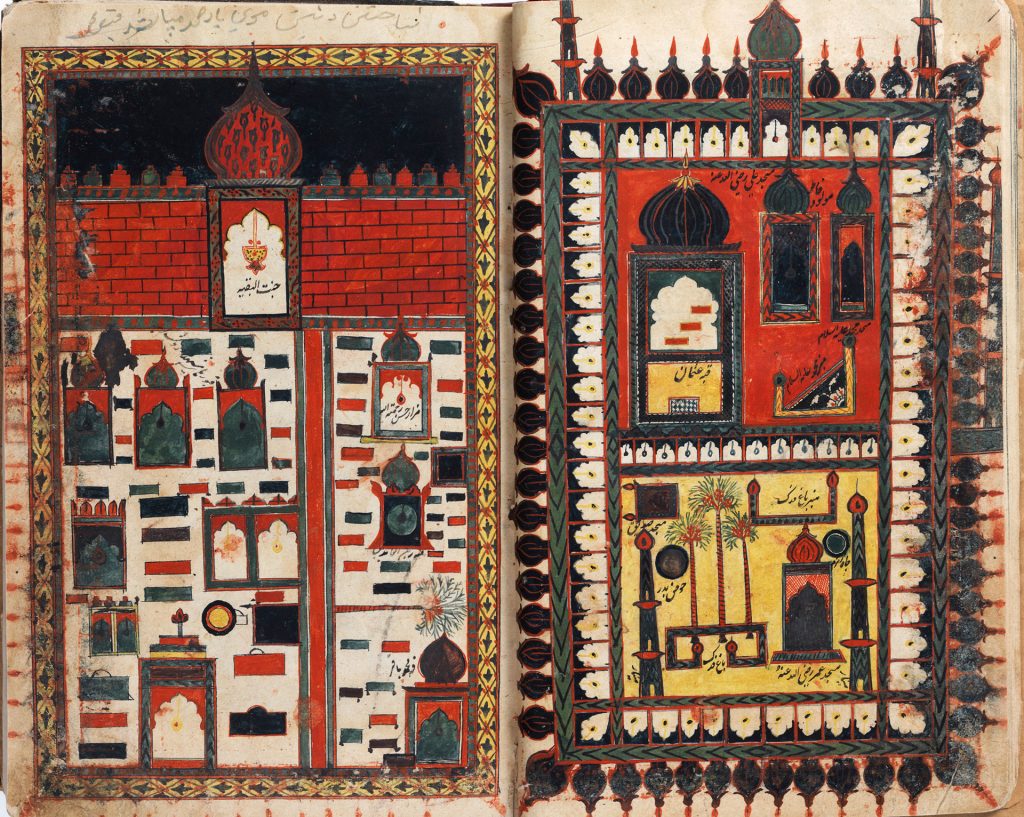
Turkish-made hilyah of the Prophet Muhammad featuring depictions of Mecca and Medina in the bottom centre from the 19th century
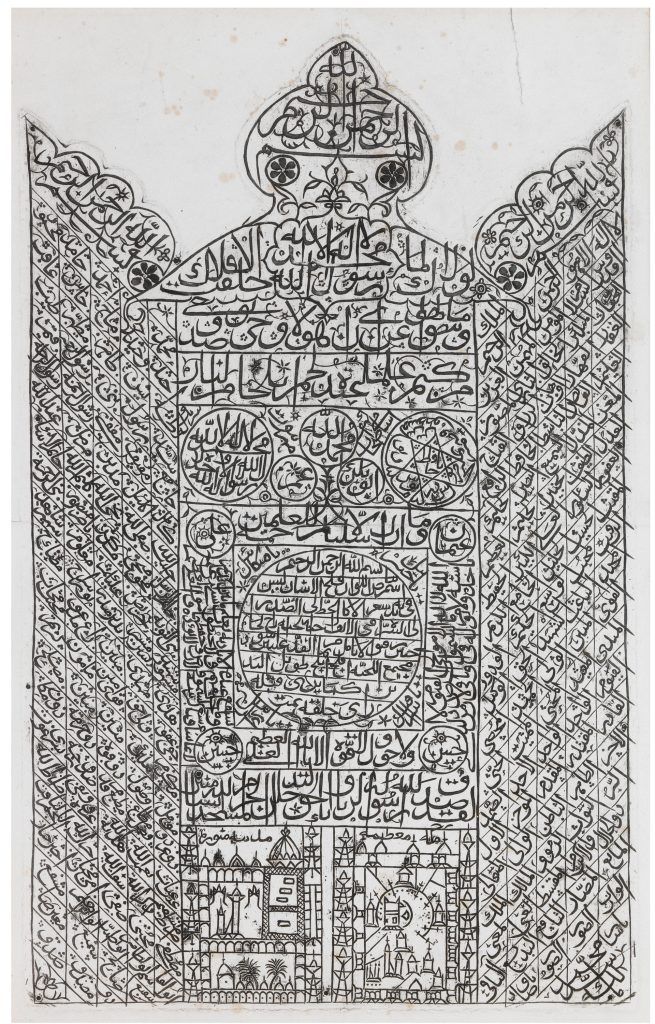
Indian-made miniature of the Prophet’s Mosque in Medina from the 19th century
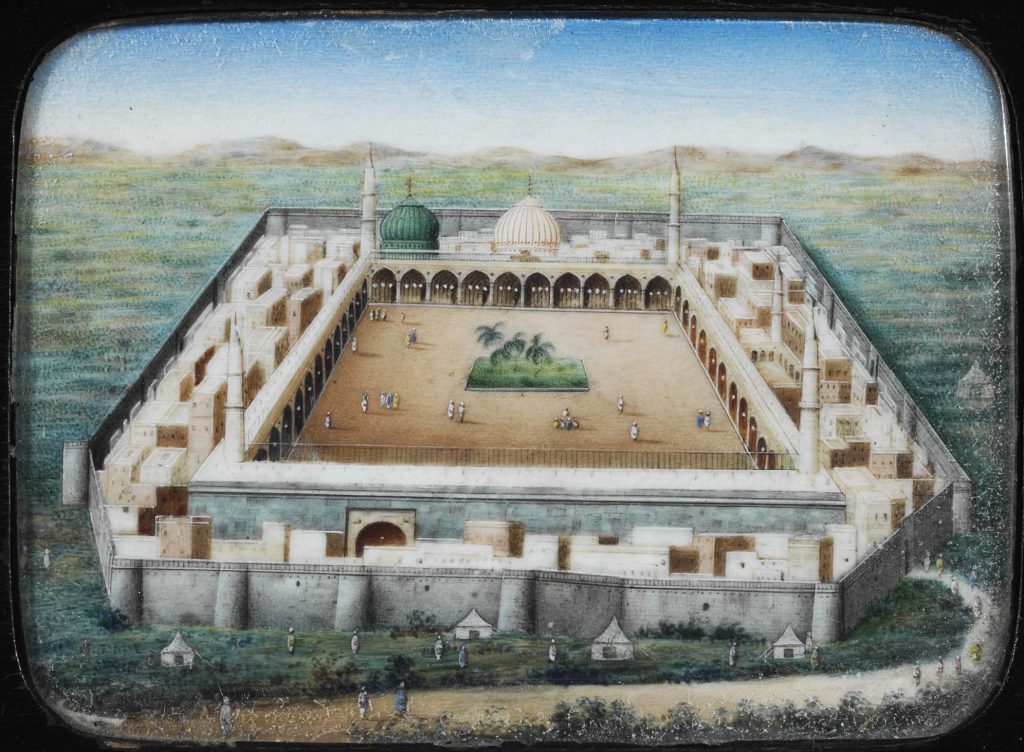
Indian-made depiction of pilgrims on the hajj from the 17th century
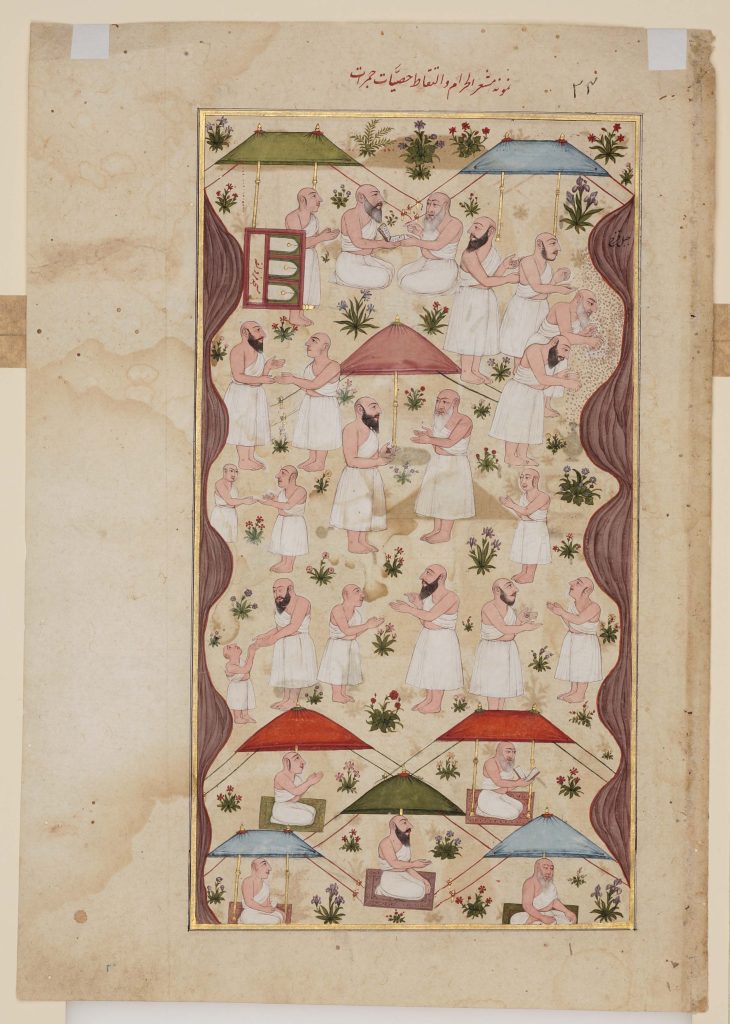
The Khalili Collection’s efforts to digitise and share these beautiful objects with the world is commendable and its collaboration with public and private bodies to make its collection more accessible is a model for other large collections to follow. Be sure to check to delve deeper into the Khalili Collection’s collection of art and objects related to the hajj and the seven other collections available to explore online.
Archives and collections give us the opportunity to juxtapose cultures and traditions from across the world to understand others better, and in turn ourselves. The Khalili Collection’s series of art and objects related to the hajj is an important resource to help us appreciate its rich artistic history, but also to see the beauty in the diversity of cultures and peoples that have journeyed to and commemorated these two cities over the centuries.
WE SAID THIS… Celebrating World Oceans Day With The Uniquely Egyptian Art Of Khayyāmiyah


